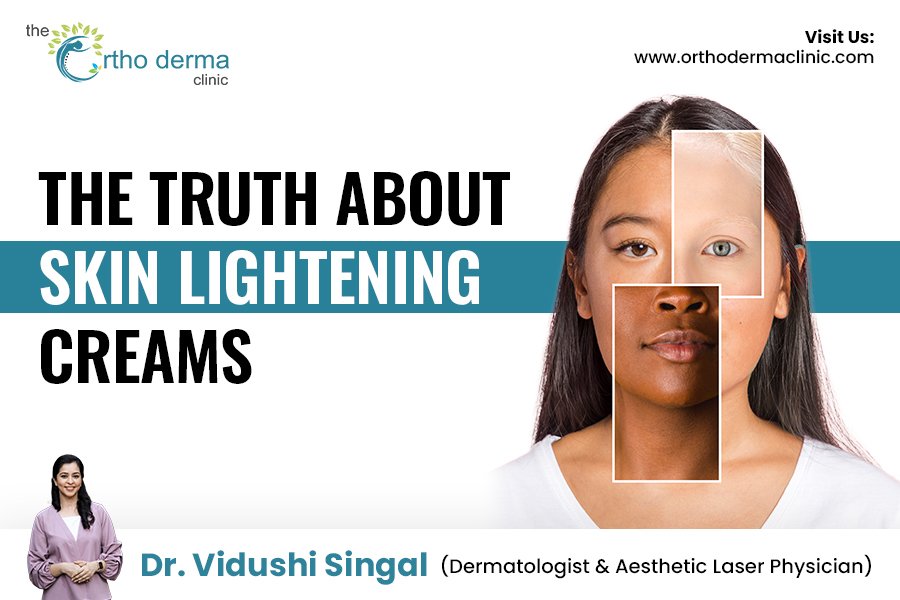In today’s beauty-conscious world, skin lightening creams are widely marketed with promises of fairer, brighter, and flawless skin. Many people use them to reduce dark spots, pigmentation, acne marks, melasma, and uneven skin tone. But here’s the big question: Do they really work? Are they safe?
As a dermatologist, I often see patients who have damaged their skin due to unsafe creams containing harmful ingredients. In this blog, let’s uncover the truth about skin lightening creams — what works, what doesn’t, and what to use safely.
Why Do People Use Skin Lightening Creams?
- To treat hyperpigmentation caused by sun exposure, acne scars, or hormonal changes.
- To achieve a brighter and even skin tone.
- To manage conditions like melasma, freckles, and age spots.
- To get confidence in appearance when dark patches affect self-esteem.
What Actually Works in Skin Lightening Creams?
Certain dermatologically tested ingredients have been proven effective and safe:
- Vitamin C (Ascorbic Acid)
- Brightens skin naturally by reducing melanin production.
- Works best when combined with sunscreen.
- Niacinamide (Vitamin B3)
- Reduces pigmentation and improves skin barrier health.
- Also fights inflammation and redness.
- Arbutin
- Plant-derived ingredient that safely reduces pigmentation.
- Gentle and suitable for long-term use.
- Kojic Acid
- Effective in reducing melasma and dark spots.
- Often used in dermatologist-prescribed creams.
- Azelaic Acid
- Treats both acne and pigmentation.
- Great for sensitive skin.
- Hydroquinone (Prescription Only)
- Considered the “gold standard” for treating pigmentation.
- Works effectively but must be used under medical supervision as overuse can cause side effects.
What Doesn’t Work (Or Can Be Harmful)?
Unfortunately, many over-the-counter creams contain dangerous or ineffective ingredients:
- Steroid-based creams: Can thin the skin, cause acne, redness, and permanent damage.
- Mercury-containing creams: Extremely toxic, can harm kidneys and nerves.
- Excessive bleaching agents: Provide only temporary fairness but damage skin barrier in the long run.
- Fake herbal creams: Often contain hidden steroids or mercury despite being labeled “natural.”
If a cream promises “instant fairness” in a few days, it’s usually unsafe!
The Role of Dermatological Treatments
While creams help to an extent, professional treatments often deliver better, lasting results:
- Chemical Peels: Exfoliate and lighten pigmentation.
- Laser Toning: Targets deep pigmentation and uneven tone.
- Microneedling with Serums: Boosts skin regeneration.
- Exosome or PRP Therapy: Stimulates healing and rejuvenation.
Tips for Safe Skin Lightening
- Always consult a dermatologist before starting any cream.
- Pair creams with sunscreen daily — unprotected sun exposure makes pigmentation worse.
- Choose products with dermatologically approved ingredients.
- Avoid self-medicating with OTC steroid creams.
Conclusion
Skin lightening creams are not magic potions. Some ingredients like Vitamin C, Niacinamide, Arbutin, and Kojic Acid truly help in achieving brighter, even-toned skin. But unsafe creams with steroids, mercury, or bleaching agents can do more harm than good.
For long-lasting and safe results, always seek the guidance of a qualified dermatologist. At Orthoderma Clinic, Ludhiana, we offer evidence-based solutions for pigmentation and skin lightening that are both safe and effective.
